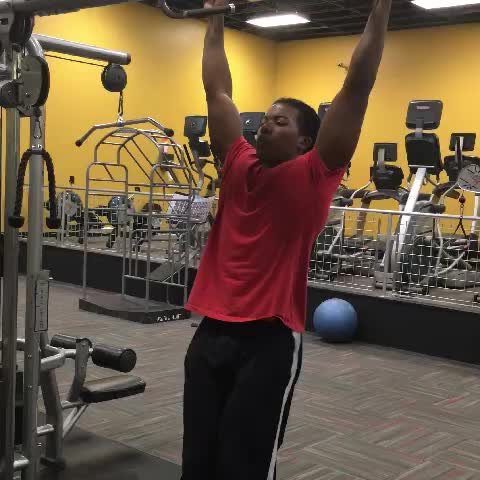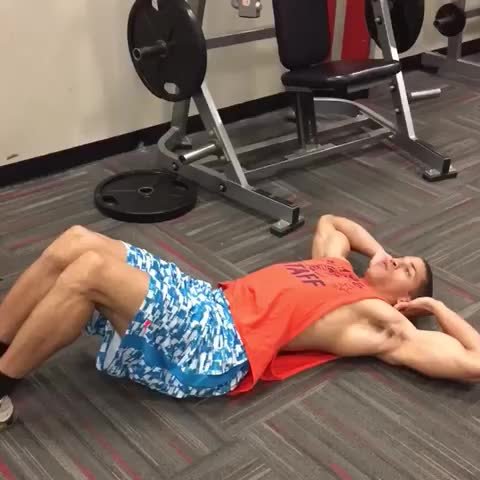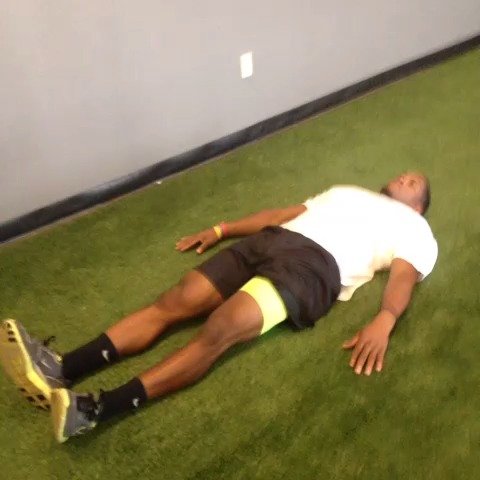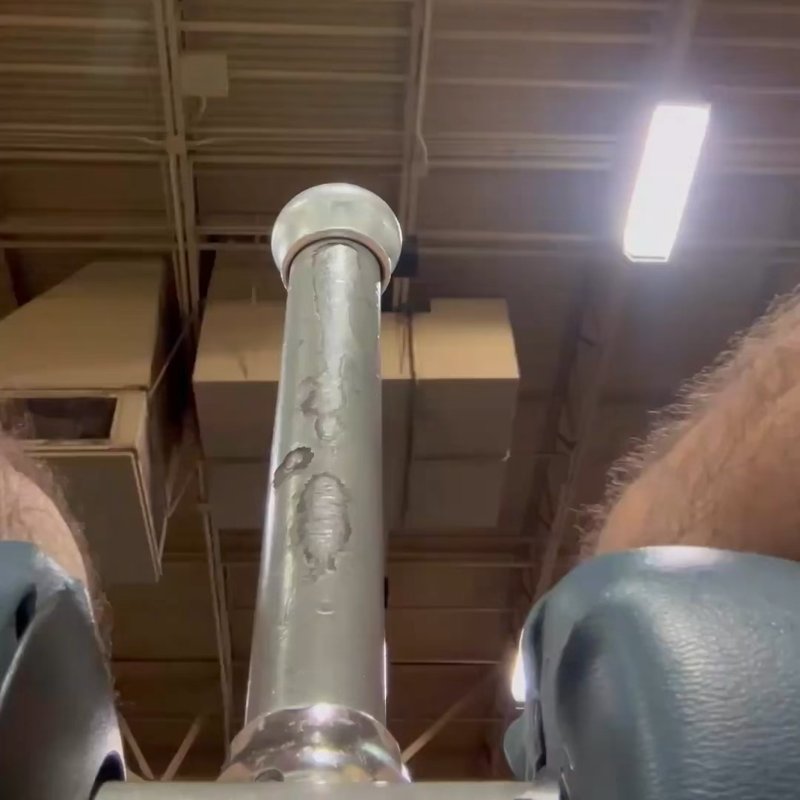Hanging Leg Raises: The Ultimate Guide
The Hanging Leg Raise is an advanced core exercise that targets the lower abdominals and hip flexors by lifting the legs from a hanging position, building significant core strength and stability.

Quick Facts
Key Benefit
Comprehensive core development with emphasis on lower abdominals
Primary Muscles
Hip Flexors, Obliques
Secondary Muscles
Forearms, Lats, Pectoralis Minor
Equipment
pull-up bar
Difficulty
Intermediate
Type
Strength
In This Guide
Ready to master the Hanging Leg Raises?
Track your progress, see improvements over time, and build strength consistently.
Download GravitusThe Hanging Leg Raise stands as one of the most effective and challenging exercises for developing comprehensive core strength, with particular emphasis on the lower abdominal region. Unlike many floor-based ab exercises, this movement requires significant stability, strength, and control as you lift your legs against gravity while supporting your entire body weight.
What makes the Hanging Leg Raise particularly valuable is its ability to target the often-neglected lower portion of the rectus abdominis while simultaneously engaging the hip flexors, obliques, and even the lats and grip as stabilizers. This makes it not only an aesthetic-enhancing movement but also a functional exercise that translates to improved performance in sports, daily activities, and other exercises.
While certainly more challenging than many core exercises, the Hanging Leg Raise offers tremendous versatility through various modifications that make it accessible to different fitness levels. Whether your goals include developing defined abdominals, improving core stability for athletic performance, or building foundational strength for more advanced gymnastics skills, this exercise delivers exceptional results when performed with proper technique and progressive overload.
Benefits of Hanging Leg Raises
The Hanging Leg Raise offers numerous advantages over many traditional core exercises, making it a valuable addition to any comprehensive training program.
Lower Abdominal Focus
Directly targets the lower region of the rectus abdominis, an area many people find difficult to develop with traditional core exercises.
Hip Flexor Strengthening
Significantly engages the iliopsoas and other hip flexor muscles, improving overall lower body mobility and function.
Grip and Forearm Development
The hanging position naturally builds grip strength and forearm endurance, providing secondary benefits beyond core development.
Improved Posterior Chain Activation
Properly performed leg raises require engagement of the lats and other back muscles to maintain stability, creating a more balanced core workout.
Spinal Decompression
The hanging position allows for natural spinal decompression and stretching, potentially offering relief for those who experience compression-based discomfort.
Progressive Overload Potential
Offers numerous progression options from bent knee raises to straight leg variations and advanced dynamic movements, providing a long-term development path.
Proper Form & Technique
Starting Position
- Grasp a pull-up bar with an overhand grip (palms facing away) at approximately shoulder width.
- Hang with arms fully extended, shoulders engaged (not completely relaxed), and body in a straight line.
- Engage your core by drawing your navel toward your spine and slightly tilting your pelvis posteriorly (tucking the tailbone slightly).
- Keep your shoulders pulled down away from your ears to engage your lats and protect your shoulder joints.
- Position your legs straight and together, or with knees slightly bent for modified versions.
- Take a deep breath and brace your core before initiating the movement.
Upward Movement
- Keeping your torso stable, initiate the movement by contracting your lower abdominals to tilt your pelvis.
- Raise your legs forward by flexing at the hips, maintaining control throughout the movement.
- For straight-leg variations, keep legs extended as you lift; for knee raises, bend at the knees while lifting.
- Continue raising your legs until they reach at least parallel to the ground (90-degree angle with torso), or higher if your flexibility and strength allow.
- Avoid using momentum or swinging to complete the movement—focus on controlled, deliberate muscle activation.
- At the top position, focus on maximizing the contraction in your abdominals.
Downward Movement
- Lower your legs with control, resisting the pull of gravity rather than simply dropping them.
- Maintain core engagement throughout the descent to prevent arching in your lower back.
- For maximum benefit, lower slowly, taking 2-3 seconds for the complete descent.
- Continue lowering until your legs return to the starting position, maintaining proper alignment.
- Without pausing at the bottom, immediately begin the next repetition if performing multiple reps.
- Breathe steadily throughout the set, typically exhaling during the raising phase and inhaling during the lowering phase.
Key Form Tips
Pelvis Position
Maintain a slight posterior pelvic tilt (tucked position) throughout the movement to ensure abdominal engagement and protect your lower back.
Control vs. Height
Prioritize controlled movement with proper form over raising your legs higher with compromised technique.
Shoulder Engagement
Keep shoulders pulled down and back to protect the shoulder joints and engage your lats as stabilizers.
Momentum Management
Eliminate swinging or kipping motions—the power should come from your core muscles, not momentum.
Breathing Pattern
Avoid holding your breath, which can increase internal pressure; instead, establish a consistent breathing rhythm throughout the exercise.
Progression Path
If full hanging leg raises are too challenging, begin with bent knee raises and gradually work toward straight leg variations as strength develops.
Muscles Worked
Primary Muscles
- rectus abdominis: The "six-pack" muscle running down the front of your abdomen is the primary target, with emphasis on the lower portion during the lifting phase as it flexes the spine and helps with the posterior pelvic tilt.
- hip flexors: This group of muscles (primarily the iliopsoas, but also the rectus femoris, sartorius, and tensor fasciae latae) works powerfully to flex the hip joint during the leg raising portion of the exercise.
- obliques: Both the internal and external oblique muscles engage significantly to stabilize the torso and prevent rotation or swinging during the movement.
Secondary Muscles
- lats: The large back muscles work isometrically to stabilize the shoulder girdle during the hanging position, preventing excessive shoulder elevation.
- forearms: These muscles work intensely to maintain your grip on the bar throughout the exercise, receiving significant endurance training during longer sets.
- rectus femoris: As part of the quadriceps group, this two-joint muscle assists in hip flexion while also helping to maintain knee position, particularly in straight-leg variations.
- transverse abdominis: The deepest abdominal muscle layer works to stabilize the spine and maintain proper core positioning throughout the exercise.
- pectoralis minor: These muscles along the ribs assist in scapular positioning and stability during the hanging position.
Common Mistakes and How to Fix Them
Excessive Back Arching
Allowing the lower back to arch excessively during the movement reduces abdominal engagement and can cause discomfort. Fix by actively maintaining a posterior pelvic tilt (tucked position) throughout the exercise. Imagine drawing your belly button toward your spine and slightly curling your tailbone forward. If you struggle with this position, begin with knee raises rather than straight leg variations, or consider using an abdominal hollowing technique before initiating the movement.
Using Momentum/Swinging
Generating momentum by swinging the body reduces muscle activation and increases injury risk. Focus on slow, controlled movements initiated by the core muscles rather than body swing. Reduce the range of motion temporarily if needed to maintain control. A helpful cue is to imagine performing the movement in slow motion, taking 2-3 seconds for both the raising and lowering phases. If swinging persists, try the "dead hang" approach—coming to a complete stop between each repetition.
Incomplete Range of Motion
Not lowering the legs fully or not raising them high enough limits muscle development and exercise effectiveness. Ensure you lower your legs to the starting position without letting them swing backward, and raise them to at least parallel with the ground (90-degree angle with torso). Use markers or targets if available to ensure consistent range. If full range is challenging, start with a modified version and gradually work toward complete range as strength improves.
Raising Knees To Chest Without Hip Flexion
Simply pulling knees toward the chest without proper hip flexion shifts emphasis away from the abdominals. Focus on initiating the movement with your lower abs by tilting your pelvis first, then continuing the movement by flexing at the hips. Think about lifting your knees toward your shoulders rather than just your chest. In straight-leg variations, aim to bring your feet toward the bar rather than just lifting to waist height.
Poor Grip Setup
Improper hand positioning can lead to premature grip fatigue or shoulder strain. Position your hands at approximately shoulder width with a firm overhand grip. If grip endurance is limiting your sets, consider using wrist straps, chalk, or alternating with knee raise variations that allow for brief grip rests. Gradually build grip endurance by increasing hanging time independently of the leg raise work.
Shoulder Elevation
Allowing shoulders to rise toward the ears (shrugging) places strain on the neck and reduces lat engagement. Before beginning the exercise, consciously pull your shoulders down away from your ears and maintain this position throughout. Imagine trying to put your shoulders into your back pockets. If this position is difficult to maintain, strengthen your lats with supplementary exercises and practice active hangs before progressing to full leg raises.
Exercise Variations
Beginner Variations
-
Hanging Knee Raises
Bending the knees while raising the legs, which shortens the lever and reduces the difficulty while still providing significant core stimulus.
-
Captains Chair Knee Raise
Performing knee raises while supported on a captain's chair/vertical knee raise station, which eliminates the grip requirement and provides back support.
-
Bent Knee Hanging Leg Raises
Starting with knees bent and maintaining that position throughout the movement, creating a shorter lever for reduced difficulty.
-
Incline Bench Leg Raises
Using an inclined bench for support, which allows for similar movement pattern with reduced challenge due to the inclined position.
Intermediate Variations
-
Hanging Straight Leg Raise
The standard version with legs kept straight throughout the movement, requiring greater core strength and increasing the load on the lower abdominals.
-
Alternating Leg Raises
Raising one leg at a time in an alternating pattern, which increases the anti-rotation demand on the obliques and core stabilizers.
-

Hanging Scissor Leg Raises
Combining the leg raise with a scissor motion (crossing legs at the top or bottom), adding an adductor/abductor component and increasing coordination demands.
-

Hanging Oblique Leg Raises
Raising the legs with a twist toward one side of the body, more directly targeting the oblique muscles for rotational strength.
Advanced Variations
-
Hanging Leg Raises to Bar
Raising the straight legs all the way up to touch the bar (or as high as flexibility allows), maximizing the range of motion and increasing the challenge significantly.
-
Weighted Hanging Leg Raises
Adding resistance by holding a dumbbell between the feet or using ankle weights, increasing the load on all involved muscles.
-
L-Sit Progression
Raising the legs to parallel and holding the position for time (L-sit), which develops tremendous static core strength and is a foundational gymnastics position.
-
Hanging Windshield Wipers
Raising the legs to 90 degrees and then rotating them side to side while maintaining height, creating an intense challenge for the entire core with emphasis on rotational strength.
Frequently Asked Questions
Grip fatigue is a common limiting factor for hanging leg raises, but several strategies can help you overcome this challenge. First, consider using lifting straps wrapped around the bar to reduce the grip demands while still training your core effectively. Alternatively, try using chalk to improve your grip on the bar, or wear weight lifting gloves with wrist wraps for additional support. You can also break your sets into smaller "clusters" with brief grip rests—for example, perform 3-4 repetitions, hang from one arm momentarily while shaking out the other hand, then switch and continue. For a longer-term solution, implement specific grip training in your routine with exercises like farmer's carries, dead hangs, or specialized grip tools. Another effective approach is to alternate between hanging variations and supported variations (like captain's chair leg raises) as you build grip endurance. Finally, if grip remains a significant obstacle, consider practicing the movement on a dip station where your weight is supported by your arms rather than your grip, then gradually transition to hanging versions as your grip strength improves.
When performed with proper technique, Hanging Leg Raises can actually be beneficial for the lower back by strengthening the core muscles that support proper spinal positioning. The key factor is maintaining a posterior pelvic tilt (slightly tucked position) throughout the movement to prevent excessive lumbar lordosis (arch in the lower back). It's this arched position during leg raises that can create potential issues, as it places stress on the lumbar spine and can contribute to discomfort. If you're experiencing lower back pain during the exercise, first check your form—ensure you're initiating the movement by tilting your pelvis rather than simply lifting your legs. Start with knee raises rather than straight-leg variations, which create less leverage and are easier to control. Consider complementary exercises like hollow body holds to develop the core control needed for proper leg raise execution. For those with existing lower back conditions, consult with a healthcare professional before incorporating this exercise. Remember that individual anatomical differences can affect how this exercise feels—find the variation and range of motion that allows you to maintain proper positioning without discomfort.
The optimal height for leg raises depends on your current fitness level, core strength, and specific goals. For beginners or those focused on strict form, raising the legs until they're parallel to the ground (forming a 90-degree angle with your torso) provides excellent stimulus while maintaining control. As strength increases, raising the legs higher—to a 120-degree angle or even all the way to the bar for advanced practitioners—increases the intensity and range of motion. However, height should never come at the expense of proper form. If raising your legs higher causes your lower back to arch excessively or initiates swinging/momentum, reduce the height to where you can maintain proper positioning. Another consideration is your individual flexibility—tight hamstrings or hip flexors may limit your range of motion in straight-leg variations. Rather than focusing exclusively on height, concentrate on quality of movement: controlled tempo, full core engagement, and proper pelvic positioning throughout the exercise. For most trainees, consistent work with proper form at a moderate height delivers better long-term results than struggling to achieve extreme ranges with compromised technique.
For most individuals, incorporating Hanging Leg Raises 2-3 times per week provides sufficient stimulus for development while allowing adequate recovery. This exercise places significant demands on the core muscles, hip flexors, and grip, all of which benefit from appropriate recovery periods between sessions. If you're following a body-part split routine, include them on your designated core or abdominal day. For those using full-body or upper/lower splits, they can be programmed at the end of any workout, though many find them particularly effective following upper body or pull-focused training. If you're training specifically for gymnastics or sport-specific goals, you might increase frequency to 3-4 times weekly, potentially using different variations in each session to manage fatigue. Pay attention to recovery indicators—persistent soreness in the abdominals or hip flexors, decreased performance, or inability to maintain proper form may signal a need for additional recovery time or reduced volume. Remember that the core musculature is also engaged during many compound movements like squats and deadlifts, so consider your overall training program when determining appropriate volume and frequency for direct core work like hanging leg raises.
Yes, Hanging Leg Raises are particularly effective for targeting what many people refer to as the "lower abs"—though anatomically, the rectus abdominis is a single muscle with segmented appearance rather than separate upper and lower portions. The leg raise motion specifically emphasizes the lower region of this muscle through the mechanics of the movement. During leg raises, the lower portion of the rectus abdominis works intensely to create the posterior pelvic tilt necessary for proper execution, especially when initiating the movement. This makes hanging leg raises one of the most effective exercises for developing definition and strength in the lower abdominal region. However, for comprehensive core development, it's important to incorporate a variety of exercises that target the rectus abdominis from different angles (like crunches for upper emphasis), as well as movements that engage the other core muscles including the obliques, transverse abdominis, and spinal erectors. Remember that visible definition in the lower abdominal region is highly dependent on body fat percentage—even the strongest core muscles won't show through if covered by a layer of fat, which is why nutrition plays a crucial role alongside targeted exercises like hanging leg raises for achieving the "six-pack" appearance many people desire.
Video Demonstrations
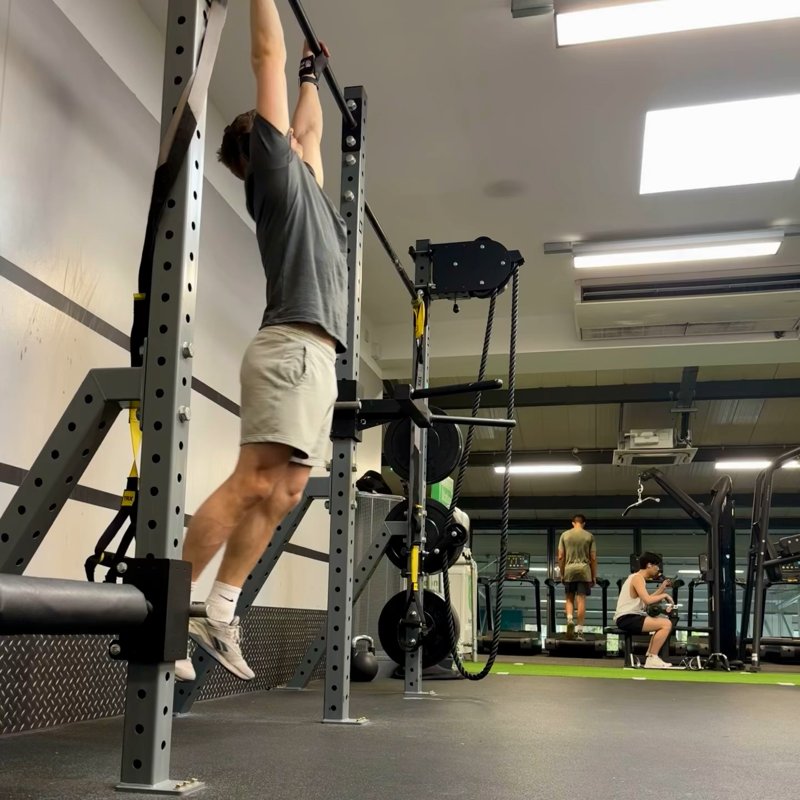
Log in to watch video demonstrations
Login to WatchTrack your progress with Gravitus
Download Gravitus to log your workouts, track your progress, and join a community of fitness enthusiasts.

Helpful Resources
One Rep Max Calculator
Find your one rep max for any exercise without maximal testing. Essential for developing effective strength training programs.
Calculate 1RMWorkout Programs
Follow structured workout programs created by fitness professionals to maximize your strength and muscle gains.
View Programs
